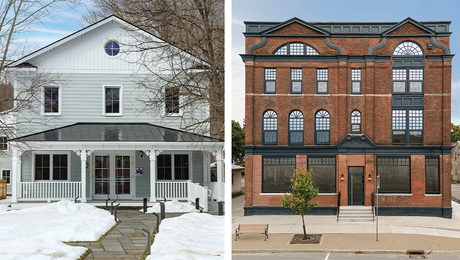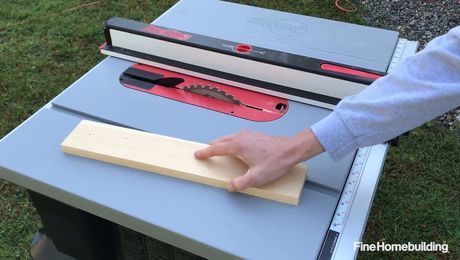Help! I have a curved room addition coming up and assume that this will affect how clapboards lay on the wall. What is the solution for this problem? Thank You for any suggestions. Bob R.
Discussion Forum
Discussion Forum
Up Next
Video Shorts
Featured Story

A high-performance single-family home builder shares tips from his early experience with two apartment buildings.
Featured Video
SawStop's Portable Tablesaw is Bigger and Better Than BeforeHighlights
"I have learned so much thanks to the searchable articles on the FHB website. I can confidently say that I expect to be a life-long subscriber." - M.K.
Fine Homebuilding Magazine
- Home Group
- Antique Trader
- Arts & Crafts Homes
- Bank Note Reporter
- Cabin Life
- Cuisine at Home
- Fine Gardening
- Fine Woodworking
- Green Building Advisor
- Garden Gate
- Horticulture
- Keep Craft Alive
- Log Home Living
- Military Trader/Vehicles
- Numismatic News
- Numismaster
- Old Cars Weekly
- Old House Journal
- Period Homes
- Popular Woodworking
- Script
- ShopNotes
- Sports Collectors Digest
- Threads
- Timber Home Living
- Traditional Building
- Woodsmith
- World Coin News
- Writer's Digest


















Replies
Bob: Here is a picture from years ago when I had to help install beveled siding on an 18 foot diameter tower. You can see where we were experimenting putting these clapboards on. As you wrap the straight siding around the building.it takes on an unhappy face profile...meaning the ends want to bow down. We forced the siding as much as practical...then took a rabbet plane and leveled off the bottom edge of the siding. We scribed up from the course below to keep on track..and then of course we checked occasionally with a transit to take out any accumulative error.
Bob: I found this picture of the tower after the siding was installed. That is myself working on the curved handrail for the stairway I was building inside the tower. The second picture is the stairway inside after completion. It was 14 feet floor to floor.
Saw kerf the back side. That will relieve alot of the lay up tension. (Smiley face)
More than likely you'll have to experiment with cut depth and spacing. The tighter radius the closer the kerfs.
Radial arm works pretty well for the cuts. A router with a long axis bit works also.
Prime the raw cuts before installing.
you have to make a template and rip each clapboard to the curved bottom..
each section will form an arch.. and the bottom of the clap will have one arch and the top of the clap will have a different arch..
each piece of clapboard is part of a conical section..
you can demonstrate this to yourself by playing with cardboard strips wrapped around a coffee can.. don't forget.. the bottom of the clap is beveled and kicked out by lapping over the one below.. so it is in a different plane than the top of the clap.Mike Smith Rhode Island : Design / Build / Repair / Restore
Or you can use shiplap, which can be bent into a cylinder, instead of beveled siding, which, as Stan and Mike have pointed out, can only be bent into a cone.
Here's a previous discussion.
http://forums.taunton.com/tp-breaktime/messages/?msg=27368.1